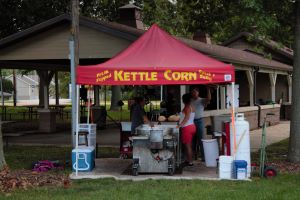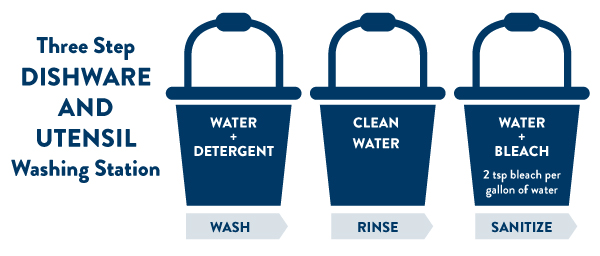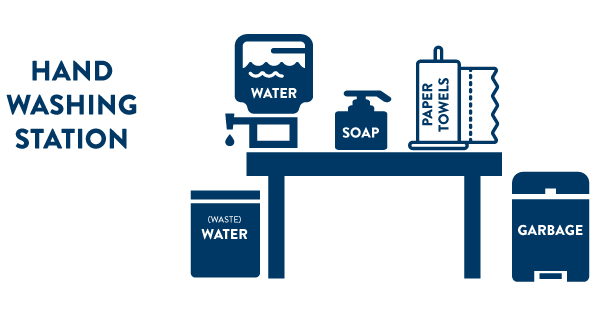Licensing Modernization - Update
Revisions to the MDA food licensing law were signed into law on May 23, 2025, and are in effect starting August 1, 2025. Changes are now in place for all new food businesses, and existing food businesses will be updated as they renew their licenses. More information about the process, including summary reports, are on MDA’s Food Licensing Modernization webpage.
Seasonal Temporary Food Stand
A seasonal temporary food stand is a food and beverage service establishment that is a food stand which is disassembled and moved from location to location, but which operates no more than 21 days annually at any one location. All stands must be operated in compliance with the Minnesota Food Code and require a Food Handler License.

Pre-Licensing
To apply for a Food Handler License, you must first complete an Applicant Form. Contact the MDA Licensing Liaison or your local food inspector to review your business plans and obtain the form. You will need the following information to submit the Applicant Form:
- Minnesota Tax ID number or social security number
- Legal business name (and DBA, if applicable)
- Physical address for your food business
- Pre-Licensing Applicant Form fee ($50)
After applying, our MDA Technical Review Team will evaluate your business plan, coordinate with the Plan Review team, and connect you with your area inspector.
Plan Submission
Plans, specifications, and fees must be submitted to the regulatory authority for review and approval at least 30 days before beginning the construction of a seasonal temporary food stand. Visit the MDA Plan Review website for more information. The plans must include:
- The intended menu and the anticipated volume of food to be stored, prepared, and sold. Please note that the regulatory authority may restrict the type of food served or the method of food preparation based on equipment limitations.
- The proposed layout, mechanical schematics, construction materials, and finish schedules.
- The proposed equipment types, manufacturers, model numbers, locations, dimensions, performance capacities, and installation specifications.
- Detailed information on any custom fabricated equipment.
- Detailed information on plumbing, water supply, and waste disposal.
Location and Construction
- Except for supply, the entire operation must be accomplished from a single self-contained unit. Locate the unit away from possible contamination sources.
- A canopy or other form of overhead protection must be provided.
- The stand must provide protection during adverse weather by its construction or location. Food activities must cease in adverse weather if the interior of the unit is not adequately protected from the weather, windblown dust and debris.
- The floor, wall, and ceiling surfaces must be smooth, durable, and easily cleanable. Acceptable floor surfaces include: vinyl, sealed wood, concrete, machine-laid asphalt, and dirt or gravel (only if covered by suitable materials that are effective in controlling dust and mud).
- In addition to the Minnesota Food Code, other applicable codes may apply. Other requirements include ensuring that gas hook-up and services comply with the State Mechanical Code (Minnesota Rules, Chapter 1346), electrical services comply with the State Electrical Code (Minnesota Rules, Chapter 1315) and that a fire extinguisher with a minimum 2A 10 B C rating is provided if required by the State Fire Marshal.
Food Sources
All foods, beverages and ice must be obtained from an approved commercial source. Any food preparation done off site must be accomplished at a licensed food establishment. Food can not be prepared in a home.
Equipment
- All equipment used in this operation must meet applicable NSF International food service equipment standards.
- Mechanical refrigeration must be provided for all potentially hazardous food.
- Accurate temperature measuring devices must be provided in each refrigeration unit containing potentially hazardous foods, and for monitoring internal food temperatures.
- Single service disposable utensils must be provided for eating and drinking purposes.
Dishwashing Facilities
If multi-use utensils are used for the purpose of preparation, storage, service or dispensing of food, then a dishwashing facility must be available for washing and sanitizing dishes. A three compartment sink either free standing or installed in a counter must be provided.
If the seasonal temporary food stand can be broken down after each use a 3-bucket system can be used for wash, rinse, and sanitizing equipment and utensils.

Handwashing Facilities
A separate handwashing device supplied with hot and cold running water, soap, nailbrush and paper towels must be provided at all stands where food is prepared.
If the seasonal temporary food stand can be broken down after each use a gravity fed hand sink with turn-able spigot is acceptable.

Water Supply
The water supply in a seasonal temporary stand must meet the following requirements:
- Water must be obtained from an approved public water supply system. Water can not come from a residential well.
- Water tanks must be provided which are easily cleanable, of sufficient capacity to meet the needs of the operation, and constructed of an approved non-toxic material.
- Hoses used to obtain water for food preparation or drinking purposes must be of food grade quality and provided with an approved backflow prevention device.
Waste Disposal
Waste water must be removed in such a manner that a public health hazard or nuisance is not created. Sewage must be discharged into a sanitary sewer or other approved sewage treatment system.

